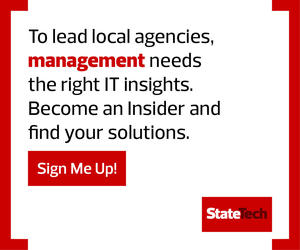A Shift to a Updated Cloud Infrastructure
New Hampshire CIO and National Association of State Chief Information Officers President Denis Goulet is someone who also thinks the time to strike is while the iron is hot.
In addition to investing in cybersecurity and broadband expansion, Goulet recently advocated for state governments to use their new federal funding for legacy IT modernization.
“States should invest in cloud services for these modernization efforts, which reduce complexity, enhance security and ensure that no unused services are kept active,” Goulet writes in StateScoop. “While this may be more difficult in less centralized IT environments, operating systems that continue to rely on outdated technologies simply cannot meet the future demand for increased digital services and the delivery of critical services and benefits to our citizens.”
State and local governments have a unique opportunity right now to not only get back to where they were pre-pandemic but to build out the modern digital infrastructure that will support 21st-century government services. Citizens have grown to expect government to meet them where they are and when they want, and agencies should be working to meet those expectations. If they can show that government can work, citizens will likely be more appreciative of government and in turn will support further investment.
COMPLIMENTARY RESOURCES: Get the tools you need to modernize your IT infrastructure.
Creating an Attractive Hybrid Workplace in Government
Few people go into government service thinking it will be a glitzy option, especially IT workers comparing it with a job at a major tech firm.
However, as a result of the pandemic, government agencies are now at the forefront of employers experimenting with and adopting long-term hybrid work models.
To attract and retain public sector employees, agencies should continue to invest in cloud-based collaboration and videoconferencing tools, as well as in chatbots and other tools that enable a more remote workforce. Agencies can reinvent and innovate around what it means to work in government and alter the core organizational infrastructure of government.
Smart agencies won’t adopt hybrid work models to stay afloat but to become more attractive to workers. Imagine being able to work for a state government but not having to move to the capital city, or only having to commute one or two days a week. That kind of flexibility will allow agencies to attract from a wider and more diverse group of potential employees. Hybrid work will be the kind of perk that never existed on such a large scale in government.
The pandemic has been devastating in so many ways in communities across the country and the world. A bright spot is that the recovery could allow state and local agencies to invest in the future, if they are able to seize the moment and make the most of it.













